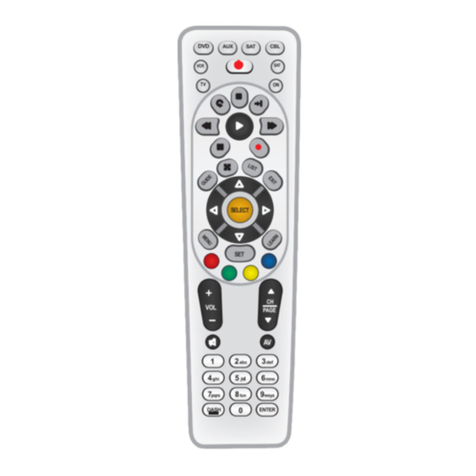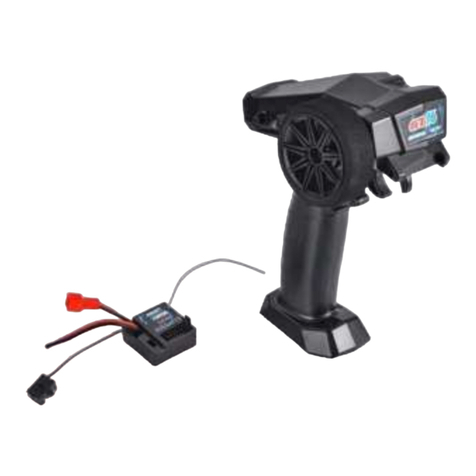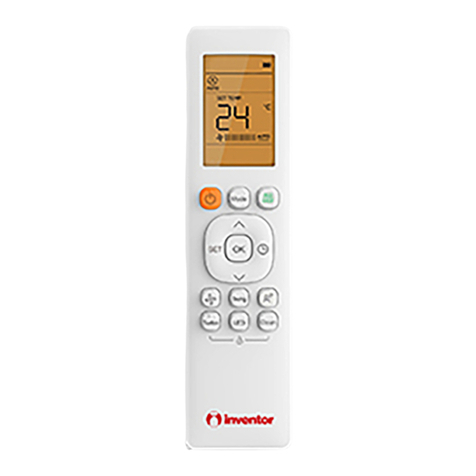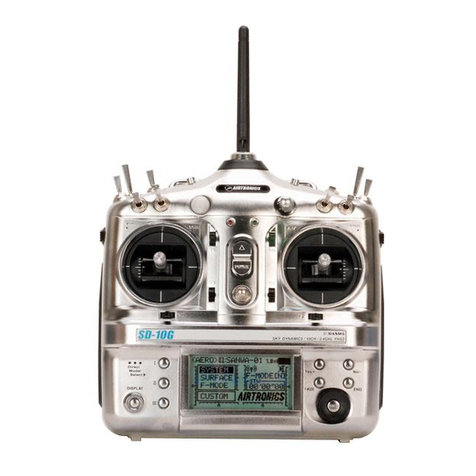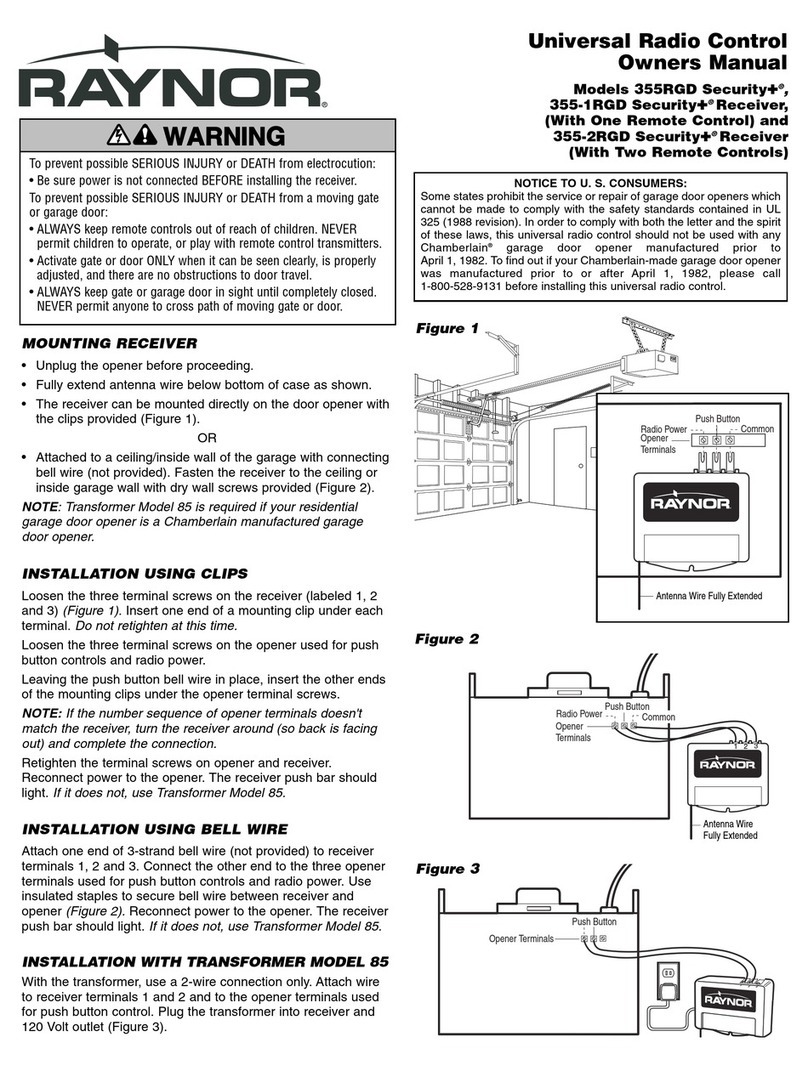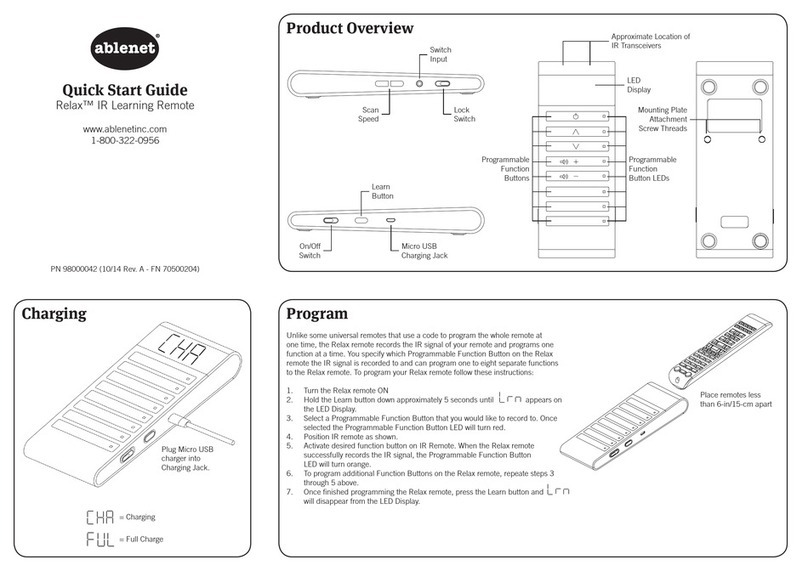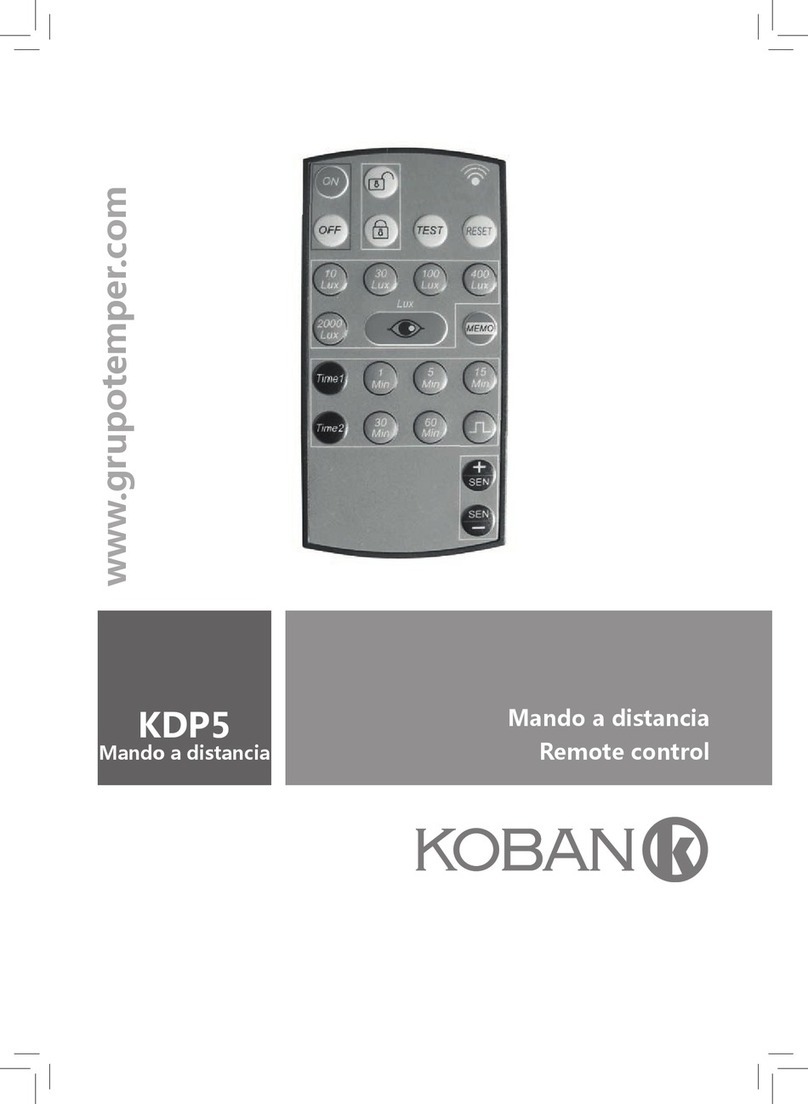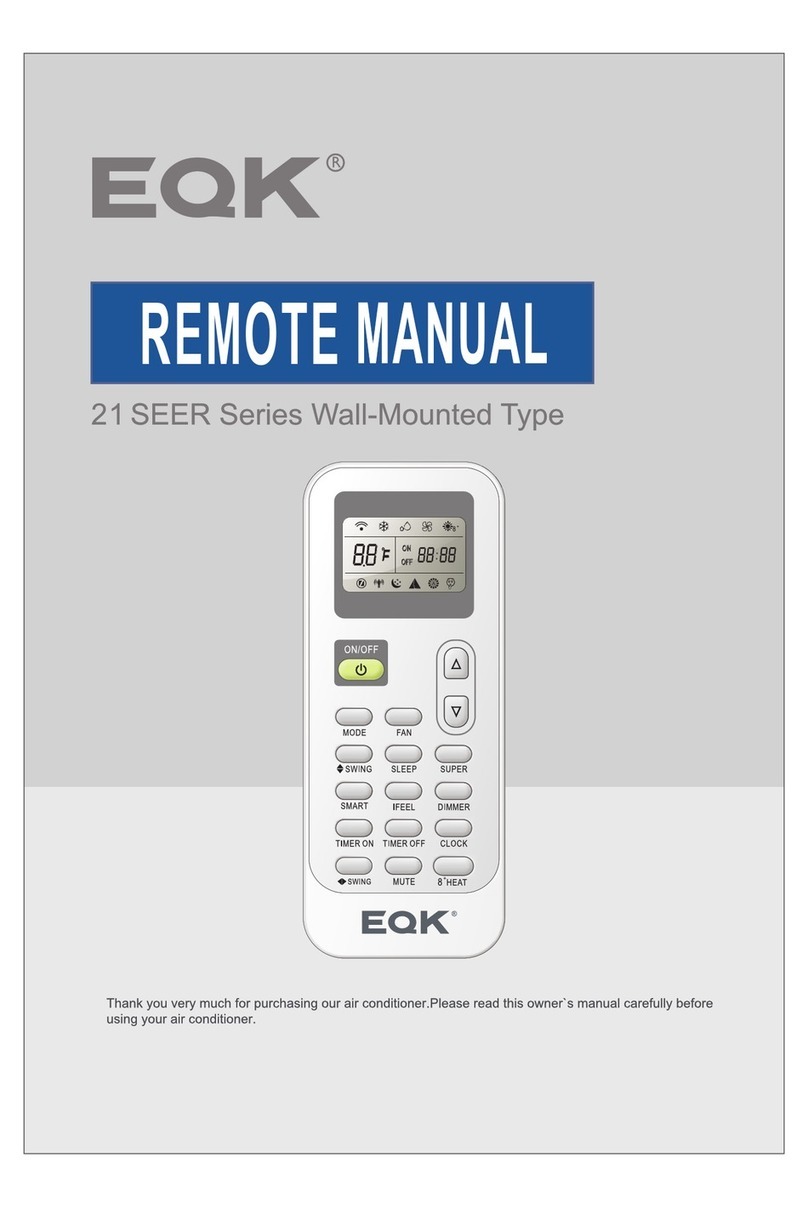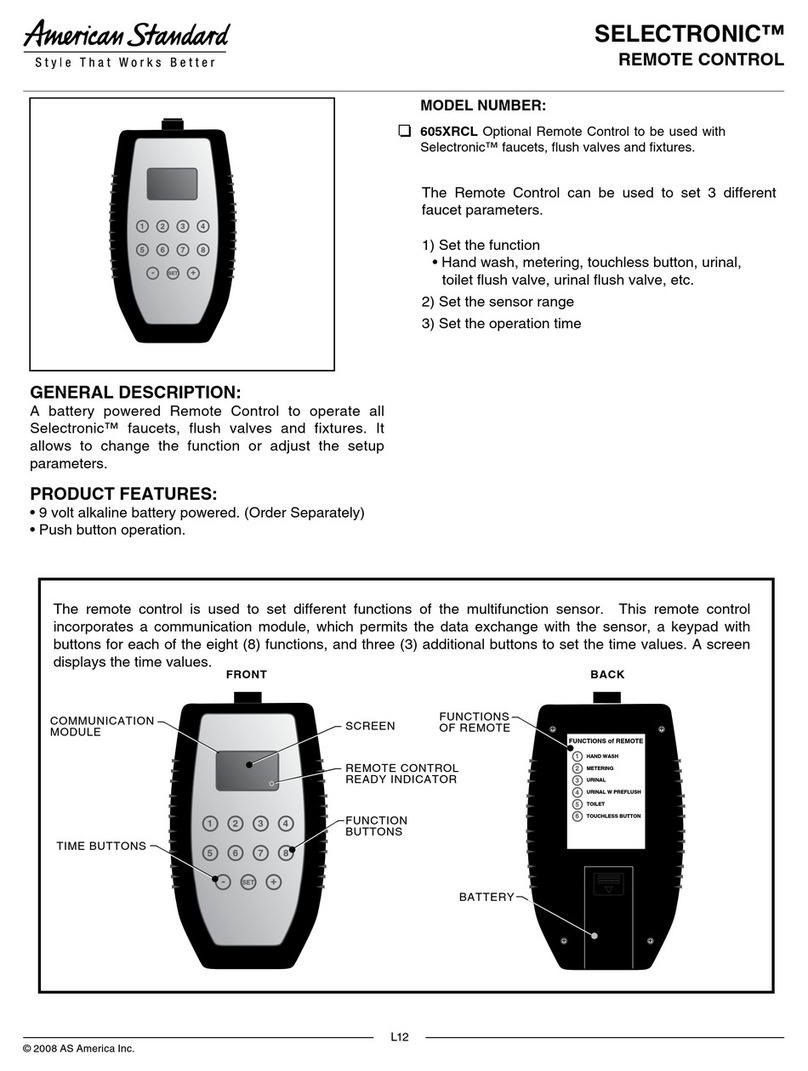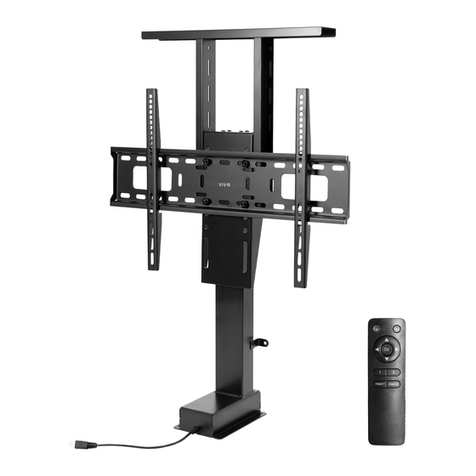Hensel IO TTL User manual

2
Thank you for choosing this product.
The Hensel IO TTL unites three functions in one: radio synchronization, remote control & TTL control. It
features an especially bright LC-display that is also easy to read in full sun.
It is used to wirelessly synchronize and control Hensel devices with a camera that has compatible IO
technology. At the same time, TTL flash control (Through-The-Lens, automatic exposure control) is
combined with the option of manual exposure control.
Please read this operating manual and the manual belonging to your camera carefully before using this
device.
Please note the safety instructions to ensure safe and correct use.
Never open the housing or attempt repairs yourself.
Never use the IO near flammable substances or explosive gases.
The product is not waterproof. Please keep it away from rain, snow, and high humidity.
Do not expose the IO to temperatures exceeding 45° C (e.g. in the car).
Do not clean the IO with organic solvents or solvents containing alcohol.
In case the IO must be used by children or people with handicap, a skilled user needs to provide
detailed instructions on proper use. Then, the device should only be used with proper supervision.
Please observe the country-specific regulations regarding proper disposal/recycling of batteries or
of the whole device.
2014/53/EU
Declaration of Conformity EU
The simplified EU Declaration of Conformity according to article 10(9) has the following content:
Herewith Shenzhen Aodelan Technology Co. Ltd. declares that the radio system type Hensel IO TTL corresponds to
guideline 2014/53/EU. The complete text of the EU Declaration of Conformity is available at:
https://support.hensel.eu/index.php/eu-konformitaetserklaerungen/download/173-eu-
konformitaetserklaerung/2877-950-0086-wireless-flash-trigger-io-ttl
Product Name: Wireless Flash Trigger
Trade Name: Hensel
Model Number: IO-TTL
Manufacturer: Shenzhen Aodelan Technology Co. Ltd.

3
Table of Content
I.
The Device
II.
First Steps 5
Inserting Batteries
IO On / Off
Connection to Camera / Specifics
III.
Basic Functions and Keys 6-8
Channel Selection
Group Selection / Mode Selection
Synchronization and
High Speed Synchronization
Remote control - Device; Modeling light
Power control
Command Confirmation
Test Function
Beep
Auto Power Off
Factory Settings
Added Functions
1.
Energy Saving
2.
Firmware Update
IV.
Operating Types 9-10
Operation in TTL-Mode (through the lens, automatic mode)
Operation in M-Mode (manual mode)
V.
USB Software Update 12
VI.
Specifications 13

4
Group
Energy
Modeling Light Status
Status
Battery Level
Mode
Sync
Channel
I.
The Device
6 14
7
8
9 12
10
11 15
13
1. Display
2. Mode Key
3. Power Setting / TTL-Offset
(<+> more, <-> less)
4. Groups (A, B, C)
5. Test Key
6. Sync Key
7. Prop Key
8. Channel/ Beeper Key
9. Modeling Light Key
10. On /Off Key
11. Control LED
12. USB Jack for Software Update
13. Mount for Flash Shoe
14. Battery Compartment
15. Flash Shoe/Mounting Base
Display –all possible indicators; they do not appear simultaneously.
1
2
3
4
5

5
II.
First Steps
Inserting Batteries
1. Open the lid of the battery compartment on the bottom of the IO.
2. Insert 2 AAA batteries into the battery compartment in the position shown. Please do not use rechargeable
batteries.
3. Close the lid of the battery compartment.
Please note:
The battery level indicator is in the upper right corner of the display[1].
Low battery level or is shown in the display [1]. Replace the batteries with new ones.
IO On/Off
1. On: Press the On/Off key [10]. The LC display [1] lights, contents are shown and the LED [11] flashes.
2. Off: Press the On/Off key [10] longer (minimum 2 s), - until the LCdisplay [1] turnsoff.
Connecting a Camera
1. Switch off the camera and the IO.
2. Slide the flash shoe [15] onto the flash shoe mount of the camera.
3. Lock the IO with the foot lock [13] (slide to the right) until it locks into place.
4. Switch the camera and the IO on and select the shooting mode of your camera.
5. For IO removal, press the release button on the foot lock [13] and slide the locking lever all the way to the
left. Then pull the IO out of the flash shoe.

6
Specifics
The following measures can help in case of malfunctions:
Align the IO TTL or the flash new, or newly position it.
Change the distance between the transmitter and the flash/ receiver. If the distance is too short or too long,
it can lead to trigger misfires!
Contact your service, dealer, or distributer.
III.
Basic Functions and Keys
Channel Selection
Use the channel selection to select one of the eight different frequencies.
Press the Channel /Beeper Key [8] to select a channel. The currently selected channel will be
displayed in the section “Display” of the display [1].
Group Selection
1. Groups are used to remotely control select groups of devices.
2. Any devices assigned to the same group under the same channel will be controlled simultaneously.
3. Press the group key [4] A / B or C to select a group. The selected group is indicated by a highlighted
frame appearing around the letter.
4. Press the group key [4] again that corresponds to the currently selected group to switch off the group. The
highlighted frame surrounding the letter disappears.
5. Only the group marked with a highlighted frame around its letter is selected!
6. If no individual group is selected, all three groups are controlled in sync.
Mode Selection (TTL or manual) Please select the corresponding mode on the IO and also on the flash!
1. The currently selected IO mode is shown in the “Mode“ section on the display[1].
2. Press the Mode key [2] to switch between TTL mode(automatic)and M mode (manual).
3. TTL Mode:The camera specifies the light output of the flashes. Theratio between the flash power of
groups A, B and C can be adjusted. In this operating mode, the keys [3] control the TTL- Offset and not
as classic the flash power. Furthermore, a TTL measurement can be saved and then used continuously.
(see page 10, Operation in TTL Mode).
4. M Mode: The flash power for group A, B and C can be manually controlled with the keys [3].
5. Please note the instructions concerning relative power level in the section “Operation in TTL Mode”.
Synchronization (on the first or second shutter curtain and HSS*)
Please select the FP mode directly on the flash. In order to optimally use HSS, please make sure to work
with fairly long flash duration times.
The selected synchronization setting will be displayed in the “Sync“ section of the LC display [1].
Press the Sync key [6] multiple times to leaf through the different sync options:
Synchronization on the first shutter curtain (1st, also called front curtain). The flash will be
triggered immediately when the first shutter curtain is triggered.
Synchronization on the second shutter curtain: The flash will be triggered directly with the start of
the second shutter curtain.
HSS: High Speed Synchronization (Also known as Auto FP or FP Flash). This allows the
use of shorter shutter speeds than the so-called X-Sync time.
* Please make sure to follow the operating instructions of your camera!

7
Please note
The IO for Canon cameras supports three synch options: 1st, 2nd, andHSS.
The IO for Nikon Cameras supports two synch options: 1st and 2nd. To use the high speed sync,
please activate the FP mode in the camera menu*.
IO for Sony version supports two synch options: 1st and HSS. To use the sync on the 2nd
shutter curtain, select “Rear Sync“ mode in your camera menu (or “2nd curtain“).*
* For further information, see the operating manual of the applicable camera.
High Speed Synchronization or HSS (also known as Auto FP or FP Flash)
1. HSS makes flash exposures possible with shorter shutter speeds than the shortest sync time (X-
Sync) of the camera, up to 1/8000 s (this can vary depending on camera model and flash power).
2. This option also serves to limit the impact of ambient light, or lets you work in bright ambient light but
with less stopping down (selective depth of field).
Info regarding HSS
Many flashes pulse during an HSS-flash to achieve constant light results while the shutter is open. In
contrast, the Hensel Foris 1000 emits one flash with a very long flash duration. The result is the same.
Due to special technology used for Foris, more energy is available while conserving the flash tube.
The possible range / power can vary significantly from flash to flash.
The frequent use of HSS can possibly have a negative impact on the useful life of the flash tube (this does not
apply to Foris 1000). The use of short exposure times reduces the intensity of the flash and may result in minor
color shifts.
Remote Control –Device Control; Modeling Light Control; Power Control
Hensel IO can remotely control any flash with integrated Hensel IO TTL radio function.
The channel settings on the Hensel IO mustmatchthechannelsettings of the flash devices.
Press any group key [4] to control the devices in the group selected.
If the highlighted frame around the letter disappears, this group cannot be controlled separately.
Press the modeling light key [9] to switch the modeling light of the selected group on or off.
If the modeling light is switched on in a group, MODEL is indicated in the column behindthegroup
letter.
Press the power adjustment key [3] to adjust the power for the group in relation to the other groups
(TTL mode), or the power level for the group (M mode).*
<+> increase power
<-> decrease power.
Briefly press the power adjustment key (< 2 seconds) to set the flash power in steps of 1/10 f-stops.
Press the power adjustment key longer (> 2 seconds) to set the flash power in steps of 1 f-stop.
Since power adjustment functions differently in TTL mode and manual mode, we recommend reading the
complete instructions for both modes in the section “Operating Modes. “

8
Command Confirmation (only in M mode)
1. When the output power of a flash has been set to maximum or minimum level, the flash cannot
continue to increase or decrease its IO specified output power.
2. A short beep signal indicates that the command could not be executed.
3. The power of all flashes in a group remains unchanged.
Test Function
1. Press the test key [5] to send a manual signal for the remote triggering of the flash and to check for
function.
Beep
1. Keep the Channel/Beep key pressed [8] until the IO emits two short signals to switch the IO on or off.
2. A long beep signal appears when the IO is turned on, regardless if the beep function has been
turned on or off.
3. Some functions are not supported in certain situations. If the applicable key is pressed, no beep signal
appears even if the beeper is switched on.
Auto Power Off
1. IO switches off automatically after 30 minutes of inactivity.
2. After switching the IO on by pressing the On/Off key [10], automatic switch-off is activated again.
Factory Settings
1. Make sure the IO is switched off.
2. To reset the IO to its factory settings, keep the mode key [2] pressed and press the ON/OFF key
[10] at the same time. The display [1] shows “rES“ .
3. Release the key, the IO is switched on and reset to the factory settings.
4. The factory settings of the IO are –TTL mode, 1st (synchronization on first curtain), channel 1, all Groups,
the ratio between the power settings for the groups A,B, and C is 0.0.

9
Added Functions
1. Energy Saving
The display [1] backlight is dimmed after 15 seconds of inactivity.
Press the On/Off key [11] or any random function key to reinstate the brightness of the
display backlight.
2. Firmware Update via USB Cable
Prior to using your new IO, we recommend that you look for firmware under the menu point “Info“
located in the info section of the Hensel website (www.hensel.eu).
Keep the power adjustment key [3] “-“pressed while the IO is switched off and then press the On/Off
key[10]. Now, the display will list the number of the current firmware version.
Press the On/Off key [10] or the test key [5] to leave the firmware-version interface and return to
the regular work interface.
Go to www.hensel.de to download the latest update packet for your IO and update your IO
according the supplied updating instructions on the latest firmware.
IV Operating Modes
Please note
The following applications are all based on the IO being in standard mode and the display
blinking green.
Connect IO with the camera.
Set you flashes in such a way that they can be synchronized via radio remote.
Set the same radio channel on IO and the flashes.
Select the same group settings (A / B or C) for all devices that are to be controlled simultaneously.
Press the test key [5] on IO to check the desired triggering.
Press the mode key [2] to switch between TTL mode and M mode (manual).
Attention: Always do mode changes on the IO and also directly on the flash device.
Operation in TTL Mode (measuring through the lens, automatic mode)
In TTL mode, the camera specifies the light performance of the flashes. If more than one flash group is used,
the ratios between the power levels of groups A, B, and C can be adjusted. This makes sense, for example,
when you want to control light contrast.
1. By pressing the Mode key [2], you can choose between the operating modes. Within the scope of the TTL function,
two TTL versions are available: classic TTL (TTL display is permanently lit) and TTL-Lock (TTL display flashes).
2. In TTL-Lock, the last value measured via TTL is locked and only the TTL-Offset can be changed. The flash power
is not measured from trigger to trigger. After selecting TTL-Lock, the value of the following exposure is saved and
used until the IO is switched off or TTL-lock is discontinued. Press the group key [4] A, B or C to select the group
that you want to adjust.

10
3. Use the power adjustment keys [3] to adjust the relative light output for the group selected in relation to
the other groups. The ratios can be set for each group ± 3.0 f-stops. The ratios should not be confused
with the exposure correction. (Please note also our information regarding this topic at the end of this
section.)
4. Press the modeling light key [9] to switch the modeling light of the group(s) on or off.
5. Press the group key [4] to switch the devices in the selected group(s) on or off. The selected group is
marked by a highlighted square.
6. If no individual group is selected, all three groups are controlled in sync.
When changing from M mode into TTL mode, the previous TTL ratio values are displayed.
Examples for settings from IO display [1] in TTL mode
The corresponding settings of the display shown in this illustration are:
- TTL mode, synchronization on the first shutter curtain(1st).
- Channel 1, Group A is selected for adjusting.
- The relative light output of the flashes in group A is set at –1.2 f-stops, the one in group B is set at + 2.0
f-stops and the one in group C is set at + 2.2 f-stops.
- The modeling light in group A and group B is switched on.
Please note
Do not confuse the relative values with the exposure correction. Always use the exposure correction
function of the camera to compensate the complete flash exposure. Applicable details can be found
in the operating instructions of your camera.
If flashes without IO TTL support are used in combination with IO flash devices, the flash output of
the non-TTL flashes will be added to the complete flash exposure. Such flashes can be used for
example for manually setting the exposure on the background.
Depending on measuring system and camera, off-center motifs in front of light or dark backgrounds
can lead to incorrect exposures. In this a case, use the TTL-Lock or work in manual mode.

11
Operation in M Mode (Manual Mode)
If the IO is set to M mode, the flash power for groups A, B and C can be set manually. By changing
between TTL and M mode, you can test your way to optimum exposure.
1. Press the group key [4] A, B or C to select the applicable group that contains the device(s) you want to
control.
2. Adjust the power for the group with the power setting key [3]. The setting (increase / decrease) always
starts with the current setting of light power and in the section ENERGY, the setting value is displayed
for 6 seconds on the display [1].
3. Press the modeling light key [9] to switch the modeling light of the group(s) selected.
4. If no individual group is selected, all three groups can be controlled simultaneously.
Example for settings from IO display [1] in M mode
5. The corresponding settings of the display shown in this illustration are:
-M mode, synchronization on the first shutter curtain (1st).
-Channel 1, group B is selected for adjustments.
-If the power is adjusted for a selected group, the power change will be displayed on the display in the
section ENERGY, as long as the group stays selected. If a new group is selected, this indicator goes
out.
-The modeling light is switched on in group A.
Please note
The current power adjustment value is only shown briefly on the display [1] and disappears after approx.
6 seconds.
If you change the power again, the initial setting value starts again at +/- 0.1 (briefly pressing the
power setting key [3]) or at +/- 1.0 (a longer pressing of the power setting key[3]).
All groups are selected if a highlighted square is not displayed. In this case all three groups (A, B and C) are
controlled simultaneously.

12
V USB Software Update
1. You need a USB cable with a micro-B type jack to make updates. This cable is not included in the IO TTL
scope of delivery!
2. You always find the latest software version for the IO at www.hensel.de in the download section under “Info“.
Download the data and unpack the ZIP file.
3. Both files, “HENSEL-ioTTL_Updater_V114.exe“ and “Language.txt“ must be in the same file.
4. Connect the USB cable to the PC.
5. Then connect the USB cable (Micro-B USB jack) with the IO TTL. The corresponding socket is located on the right
side of the housing.
6. Start the HENSEL_ioTTL_Updater_V114.exe.
7. “USb“ is indicated In the LC-Display of the IO.
8. Click on the download button –the menu “Open File”opens.
9. Then switch to the file that contains the saved FW update.
10. Select the Update-File and click on “Open “. Now the update file is loaded in the IO TTL.
11. After a successful update, the words “write+verify…” appear in the status line of the updater. The display changes
from “USb” to “End”.
12. Pull the cable and immediately reconnect, or close the updater and start it again. Now, the uploaded software
version appears under application version.
13. The transmitter is ready for use again and can be tested in connection with the Foris or simply used.

13
VI Specifications
Control LED [10]
Condition and Operation IO
IO Display
Standby in standard condition
Flashes green
Standby in relay condition
Flashes red
Communication with the camera
Flashes green
Sync command sent
Lights up in red for ca. 0.3 sec.
Note: "Flashes" means that the LED lights up approx. one time per second.
Frequency: 2.4 GHz
Range: Up to 200m for triggering
Up to 100m for control and TTL
Channels: 8 Channels (1-8)
Number of groups / Channel: 3 groups (A / B and C)
Power Supply 2 x AAA batteries (micro cells), please do not use rechargeable batteries.
Operating modes: TTL (automatic) or M (manual)
TTL Functionality: See sticker on the bottom of device
Shortest Sync Time: 1st or 2nd: minimal 1/250s
HSS: up to 1/8000s (depending on camera model)
Antenna: Integrated in the housing
Interfaces: Multi-contact camera shoe and micro-USB B connector
Accessories: Carrying Loop
Dimensions: Ca. 91 x 57 x 37mm
Weight: Ca. 80g (without batteries)
Subject to technical changes, errors excepted.
Status: January2020
Hensel-Visit GmbH & Co. KG
Robert-Bunsen-Straße 3
D-97076 Würzburg
Tel.: 0931 / 27881-0
Fax: 0931 / 287881-50

14
Table of contents


